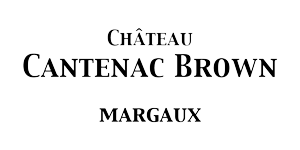Magnum, Jeroboam, Melchior… You have already heard these names of bottles. Where do these names come from? What size of wine do they correspond to? Through this first part, names and sizes will no longer have secrets for you!
Names and origins
Wine-growing has been inked in French culture for centuries. This is why the different sizes of bottles bear the names of the kings of the Bible, one of the oldest texts of our culture.
- Fillette or Half-bottle
- Bottle
- Magnum: It takes its origin from the Latin word magnum which means «big».
- Jeroboam or Double-Magnum: According to biblical history, Jeroboam I (931 – 909 BC) was the first king of the northern part of Israel.
- Rehoboam: Son of King Solomon, his tyrannical government brought him the wrath of ten of the twelve tribes of Israel who preferred Jeroboam to him.
- Mathusalem or Imperial: Mathusalem is the name of the oldest person mentioned in the Old Testament.
- Salmanazar: This surname was worn by five Assyrian kings.
- Balthazar: Balthazar was one of the three wise men who came to pay homage to Jesus at his birth. In traditional iconography, he would represent Africa.
- Nebuchadnezzar: He was the greatest king of Babylon and governed between 605 and 562 BC.
- Melchior or Salomon: Melchior was also one of the three wise men. He would represent Europe.
Sizes of bottles

The oenological interest of large bottles
In addition to the prestigious image associated with large bottles, they have an oenological interest. Indeed, the larger the size of the container is, the longer the ageing of the wine would be great. This is explained by two reasons. On the one hand, in large bottles the interactions between oxygen and wine are weaker. On the other hand, thanks to the thickness of their glass, the wine doesn’t face any change of temperature which allows it to age uniformly.
Nevertheless, there is a downside to the bottling of wine in large formats. These bottles require a very special size cap, these are cut individually. Thus, it may happen that these corks are not perfectly cut and that the wine ages less well.
The largest bottle in the world
The world’s largest bottle of wine sits in a Swiss restaurant: Gasthaus zum Gupf in Appenzel. Designed by restaurateur Emil Eberle, this life-size bottle contains sweet white wine from the Austrian Bungerland.
Its measurements are impressive: 2.4 meters high for a diameter of 68 centimeters. The cork measures 18 centimeters, or almost 9 times the size of a traditional cork. Larger than a Nebuchadnezzar or a Melchior, this bottle contains 480 L! Thus, we could put in the capacity of 640 bottles of wines of 0.75 cL.


